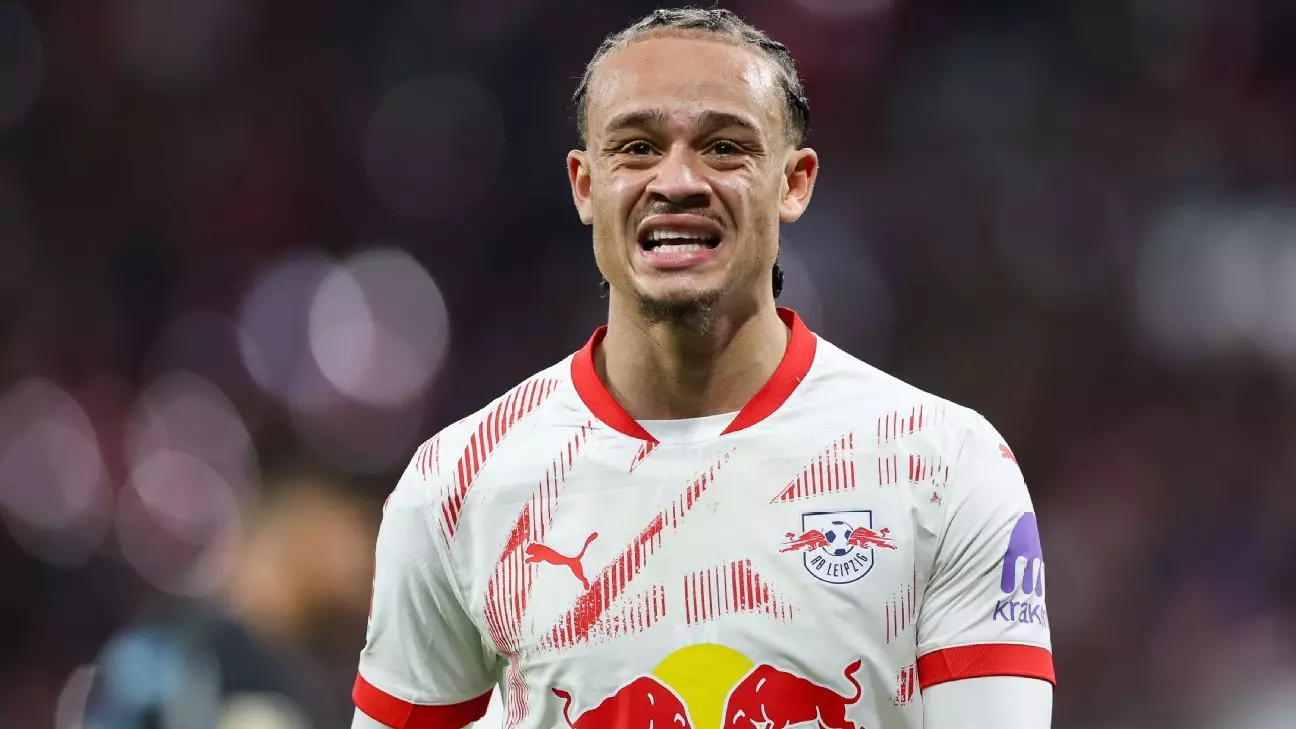As the January transfer window progresses, football clubs across Europe are busily assessing their squads and plotting new signings. Among the growing list of players attracting attention, RB Leipzig’s young attacking midfielder Xavi Simons has emerged as a hot prospect, catching the eyes of several Premier League clubs. Meanwhile, Aston Villa is pursuing Paris Saint-Germain’s Marco Asensio in hopes of bolstering their ranks. This article dives into these intriguing transfer stories and the dynamics at play.
Xavi Simons, the 21-year-old midfielder for RB Leipzig, has become the subject of intense speculation linking him to English football powerhouses Manchester City, Liverpool, and Manchester United. According to reports from Bild’s Christian Falk, these clubs are closely monitoring Simons’ situation, indicating a belief in his burgeoning potential. Despite being relatively young, Simons has already made a significant impact, particularly showcasing his talents during the European Championship with the Netherlands.
His performance on such a large stage has only heighted his market value, with estimates suggesting he could be acquired for a fee between €70 million and €80 million. Leipzig’s commitment to him, with a contract that runs until 2027, makes any potential move a complex negotiation. The interest from prominent Premier League clubs indicates not only Simons’ talent but also a larger trend of top clubs looking for youthful dynamism to invigorate their teams.
Transitioning to the Premier League’s landscape, Aston Villa is making ambitious moves by pursuing Marco Asensio from Paris Saint-Germain. As reported by L’Equipe, the Spanish winger seems intrigued by the opportunity to join Villa Park, which would offer him a fresh chapter after his relatively short stint in Paris, where he has participated in 16 matches this season. Aston Villa’s eagerness to bring Asensio into their fold highlights their intentions to bolster the team against increasingly stiff competition in the league.
Villa’s potential acquisition of Asensio would not only enrich their attacking options but could also signify a pivotal shift in the club’s stature. It reflects their aspirations and ambition to compete with storied sides in the Premier League, making a statement about their intentions for both the current campaign and beyond.
As the season unfolds, FC Barcelona is reportedly reigniting interest in signing Bruno Guimarães from Newcastle United. Teamtalk claims the Blaugrana is keen to secure the 27-year-old midfielder’s services, particularly as they contemplate offloading Frenkie de Jong to make way for Guimarães. This potential transfer not only encapsulates the competitive nature of the transfer market but also mirrors the significant strategic planning clubs must undertake as they balance financial realities with on-pitch needs.
Guimarães has proven himself in the Premier League, contributing to eight goals in 23 appearances. His dynamic skills on the ball and vision could complement what Barcelona seeks in rebuilding their squad to reclaim a dominant position in European football. The move signifies a shift towards valuing players who can enhance both the technical and tactical aspects of the team.
In the realm of emerging talents, Lyon’s Rayan Cherki has also caught the attention of several clubs, including Borussia Dortmund, who are reportedly keen on his signature. The 21-year-old has demonstrated his potential with notable performances, registering four assists and two goals recently. His estimated value of €22.5 million represents an attractive investment for clubs looking to inject youthful flair into their line-ups.
Cherki’s growing reputation suggests that, much like Simons, he embodies the future of attacking football. For clubs like Dortmund, focusing on younger players aligns with their long-standing strategy of developing talent and ensuring a competitive edge both domestically and internationally.
The January transfer window is always rife with speculation and potential upheavals. The pursuits of Simons, Asensio, Guimarães, and Cherki illustrate the competitive nature of football today, where clubs are consistently seeking fresh talent to strengthen their squads. The decisions made in this window will likely have significant ramifications for the rest of the season. As teams grapple with financial constraints and the need for quality, the focus will undoubtedly shift toward nurturing younger players in an increasingly competitive landscape.

